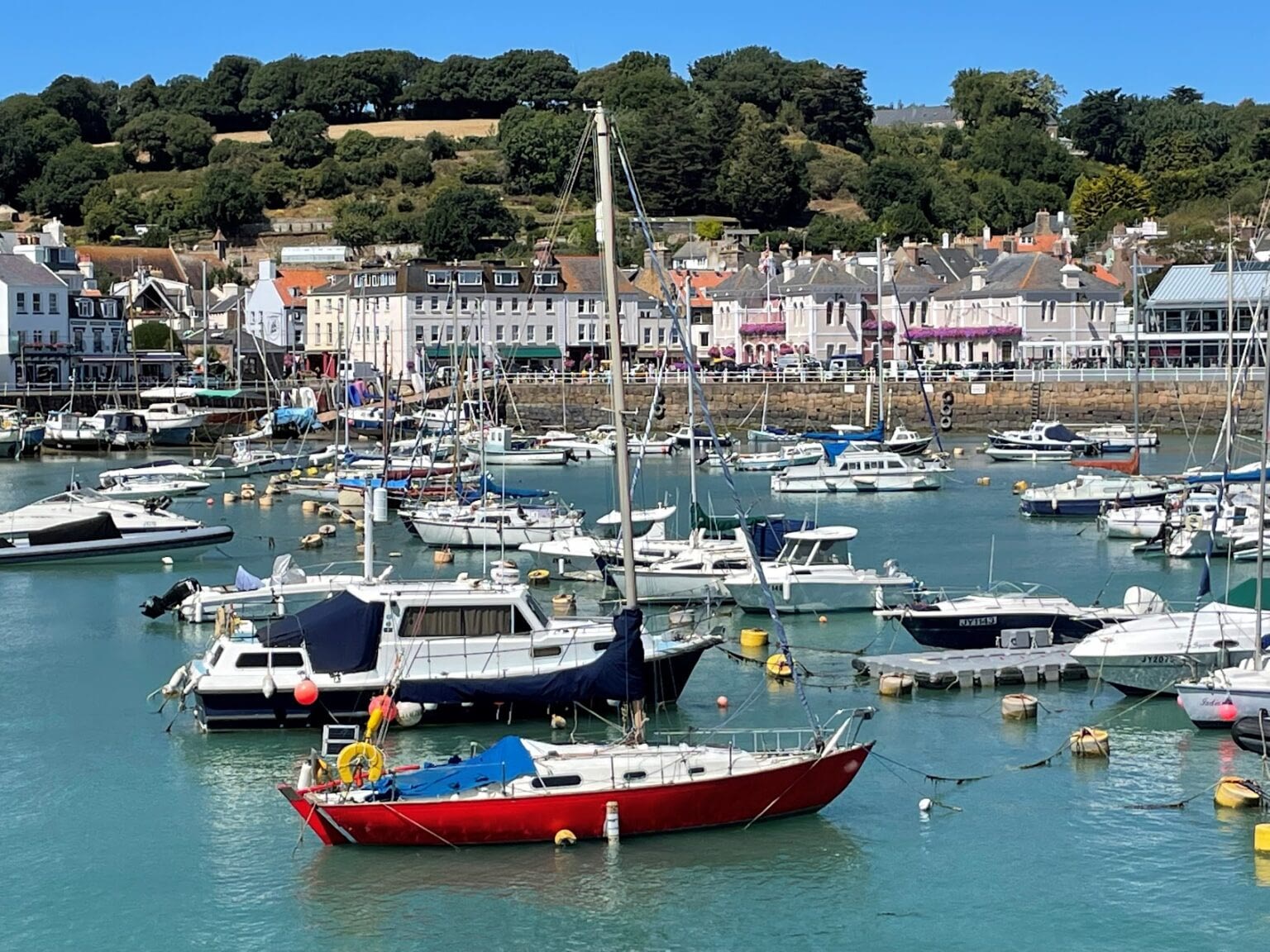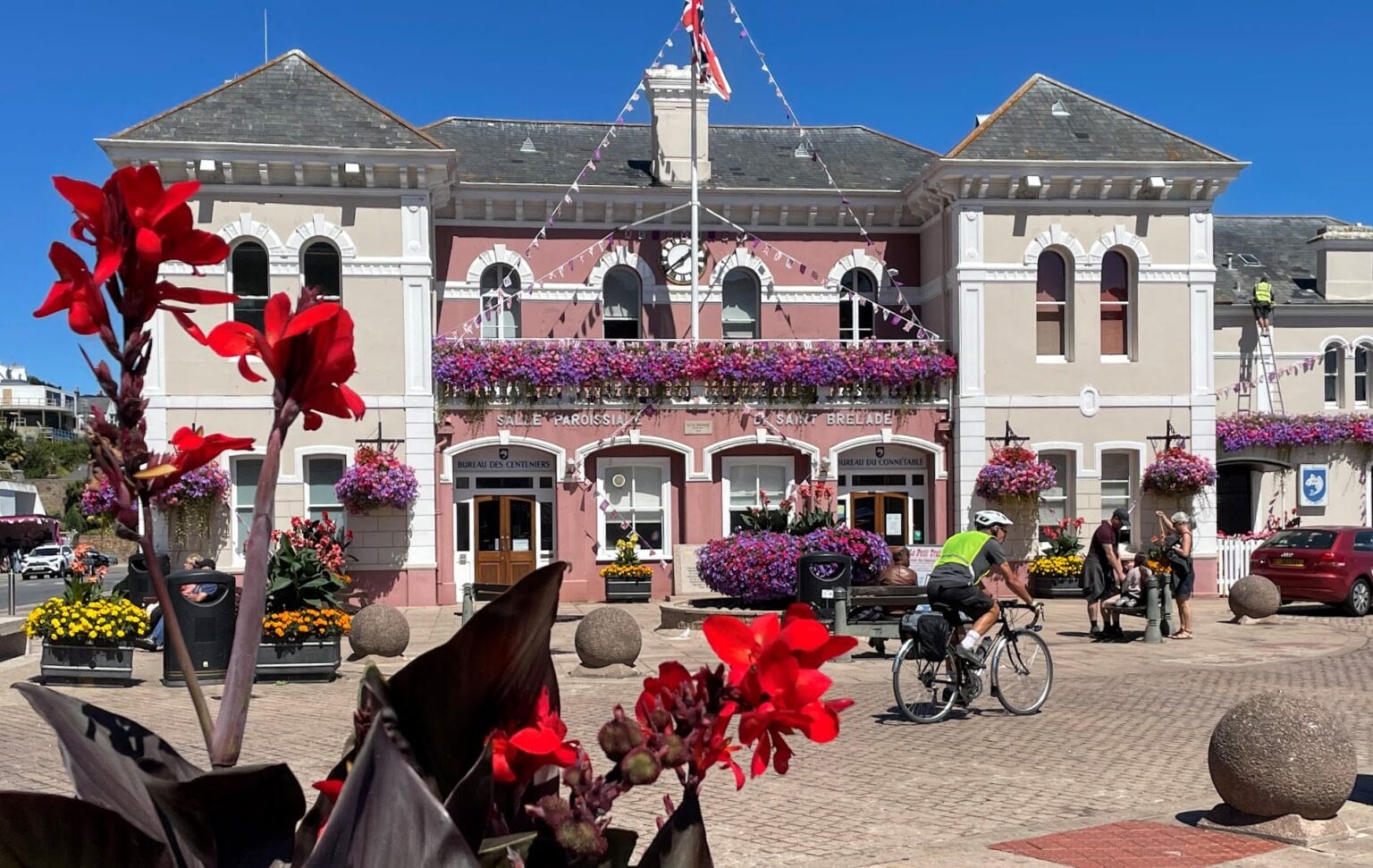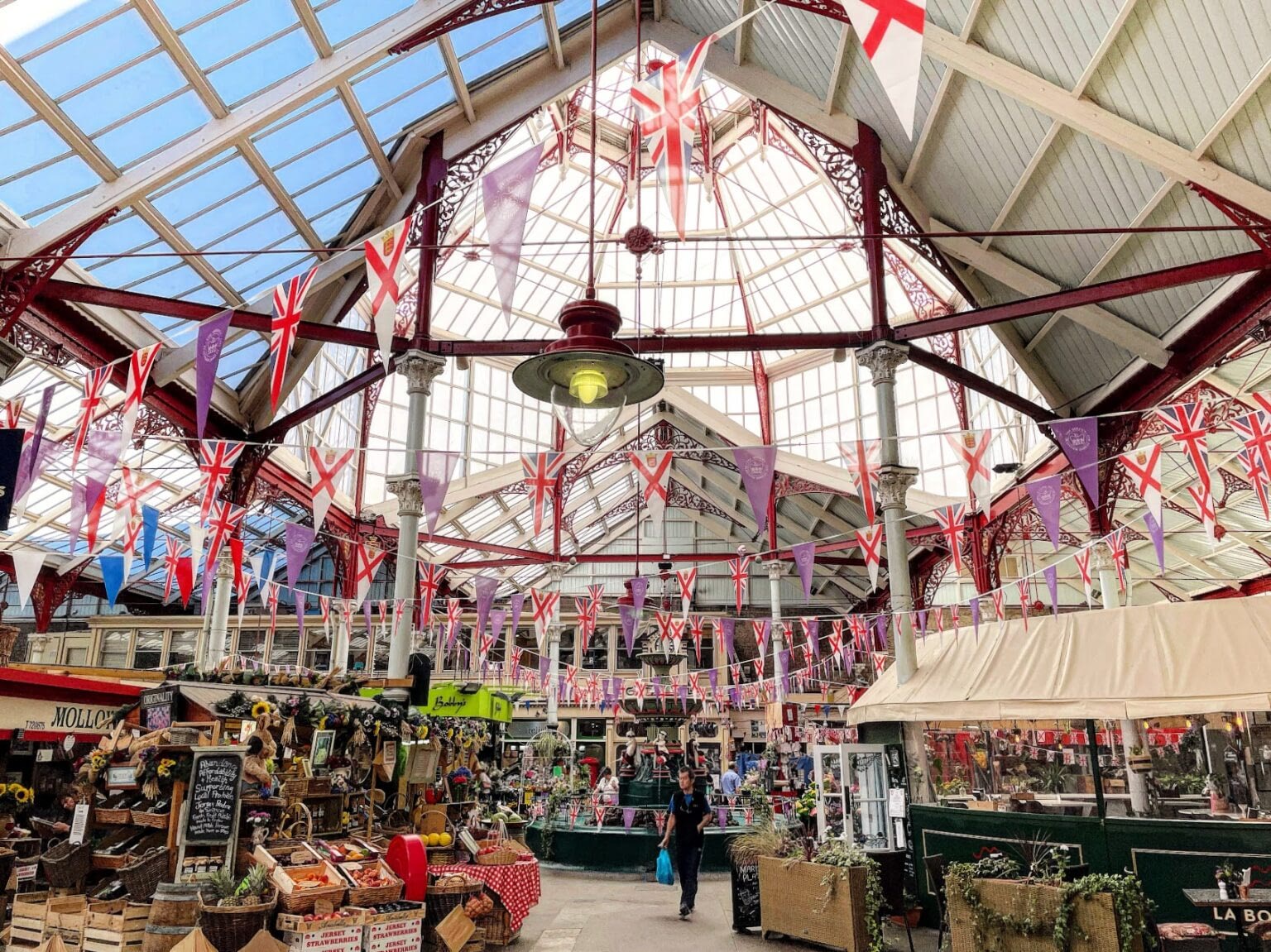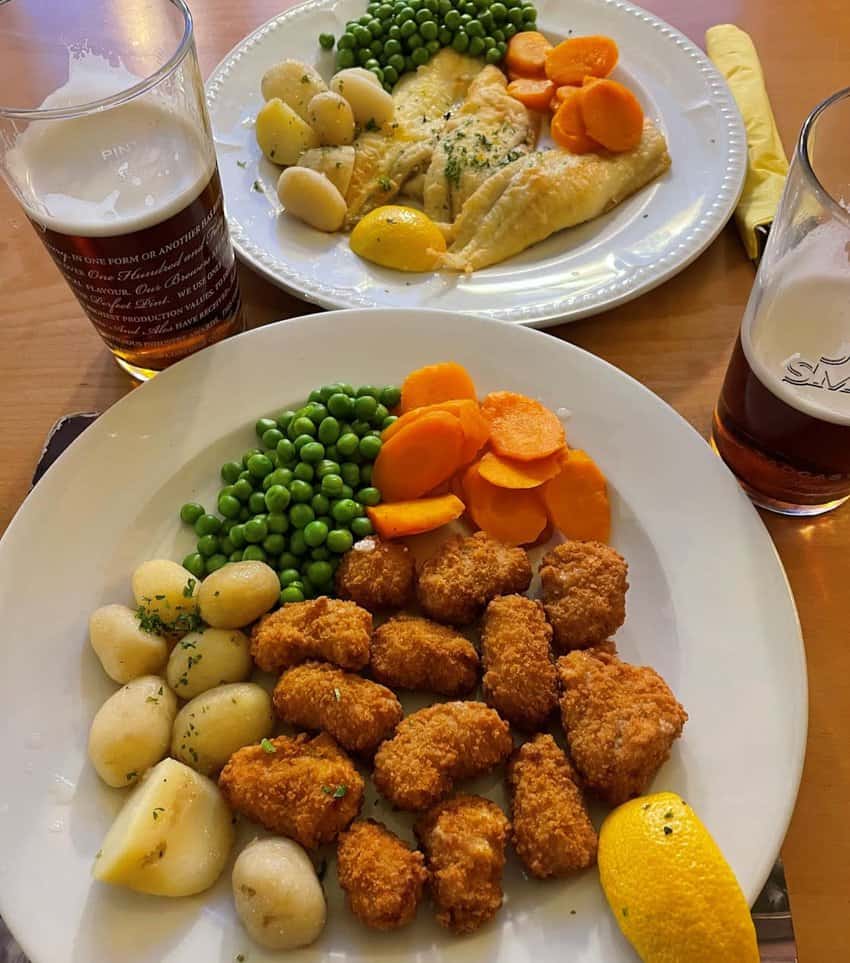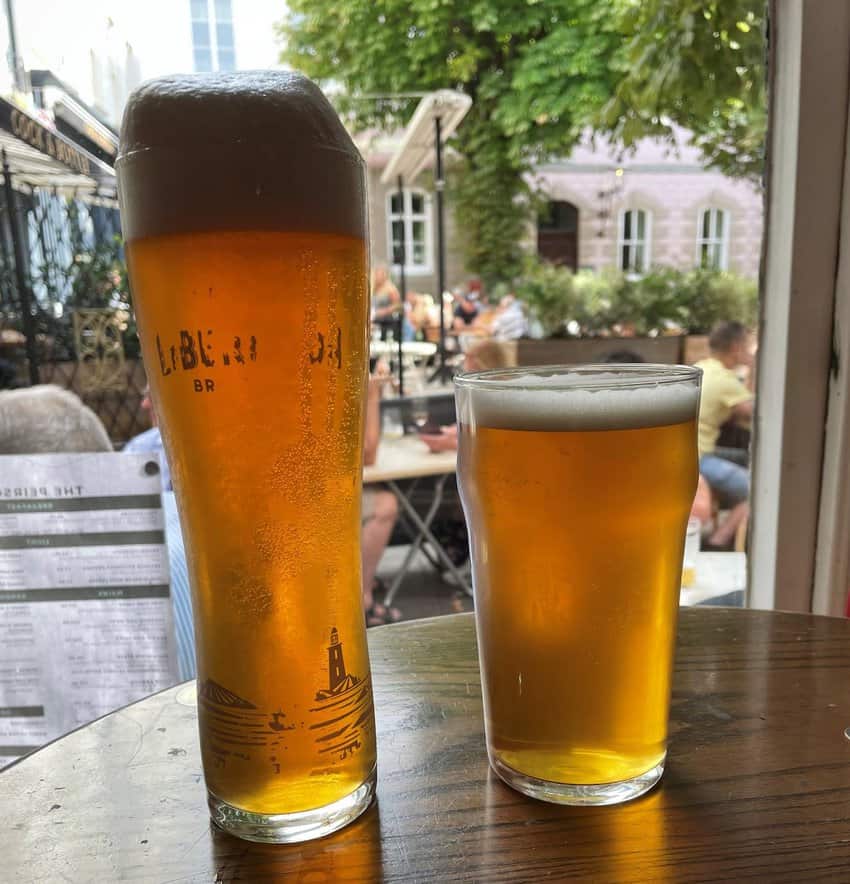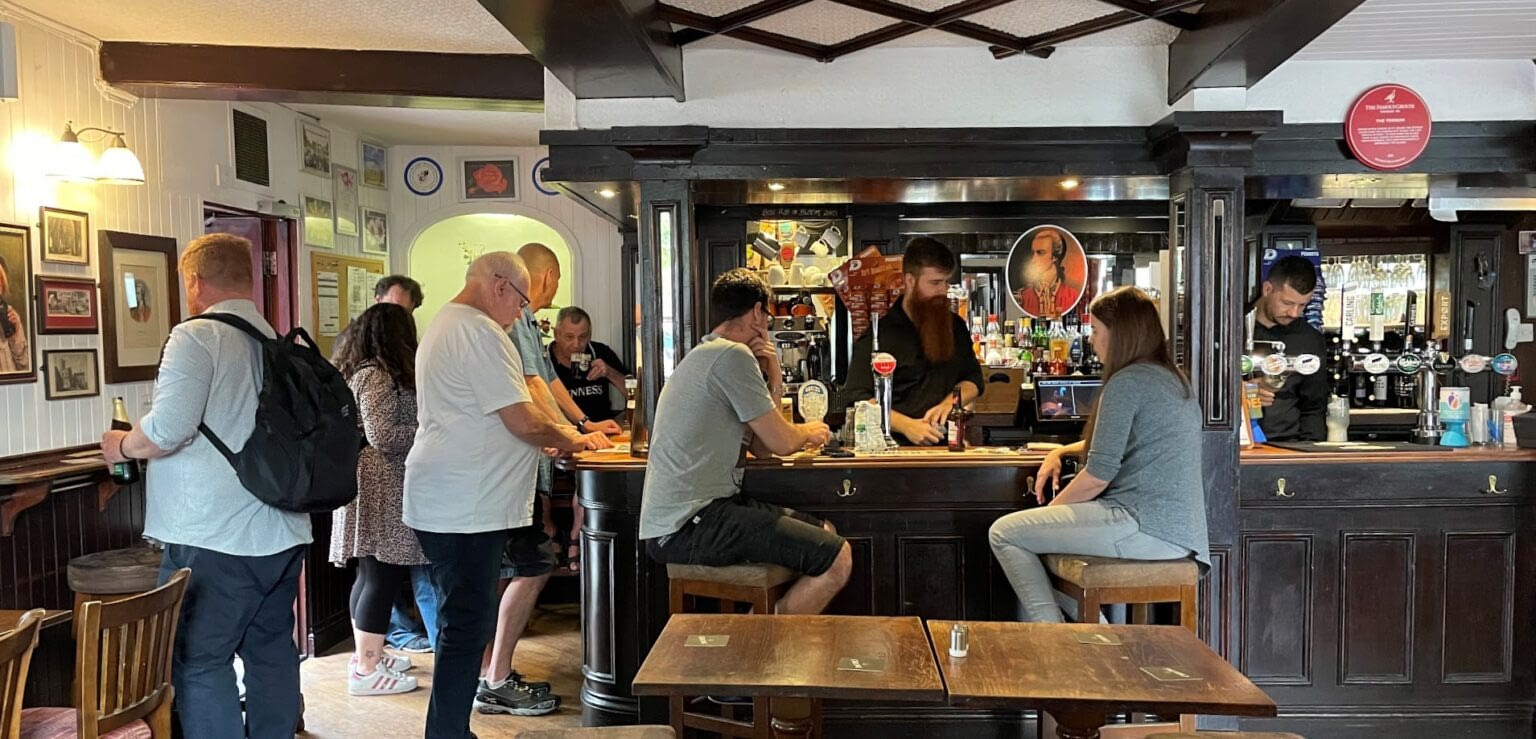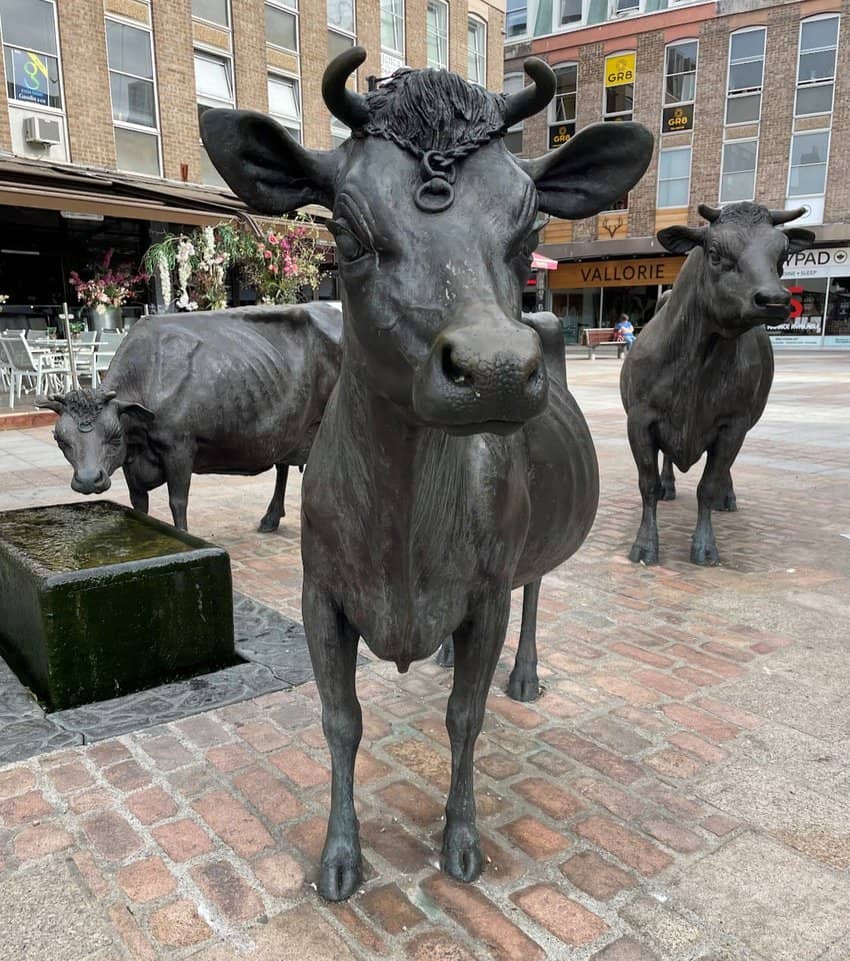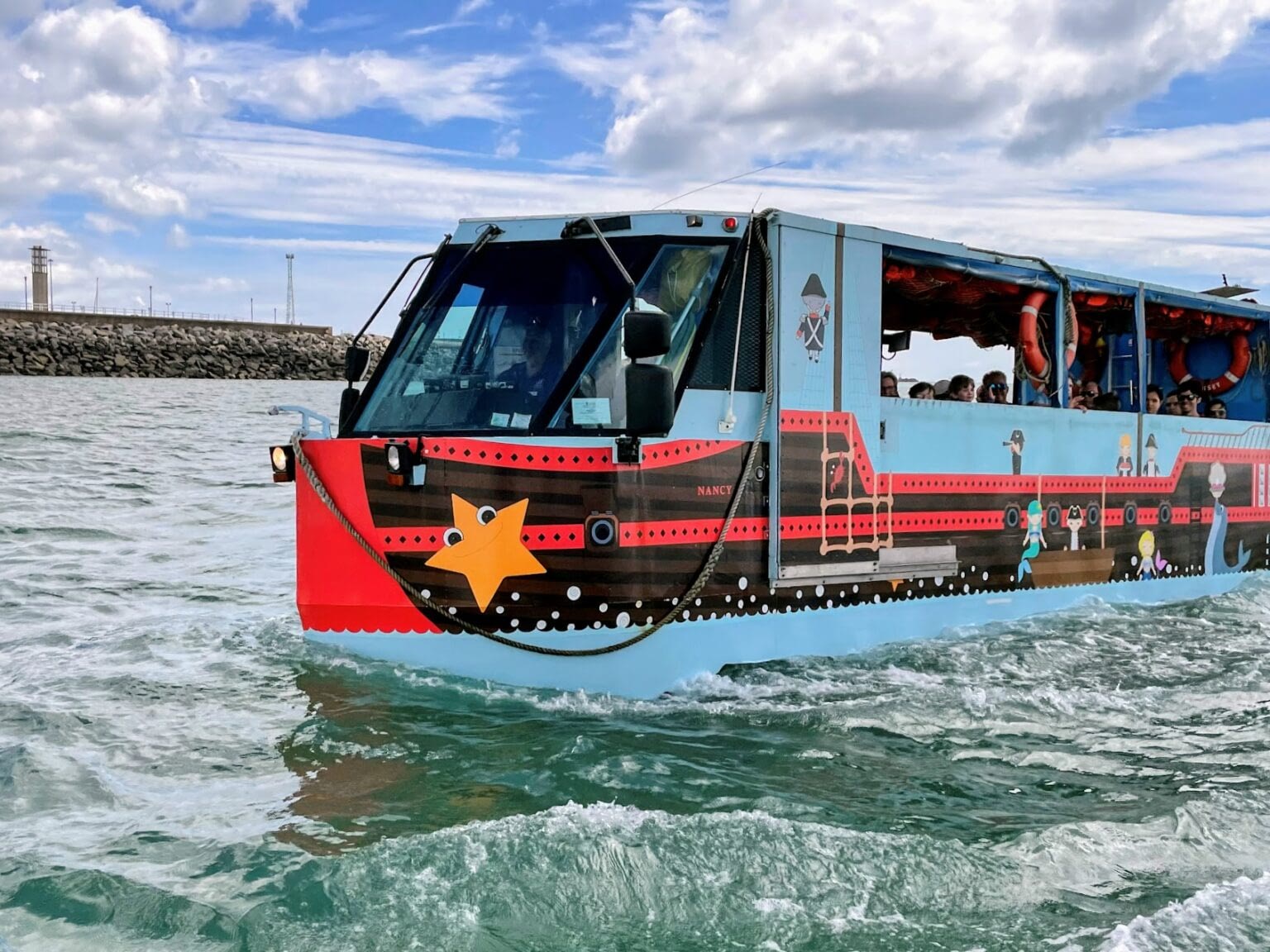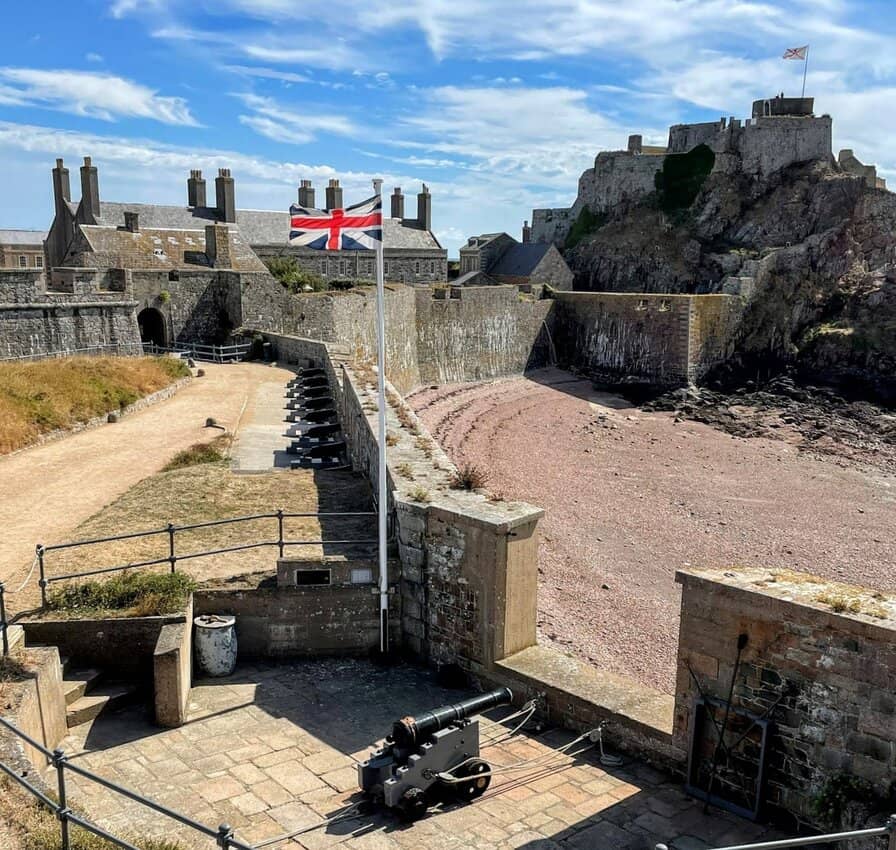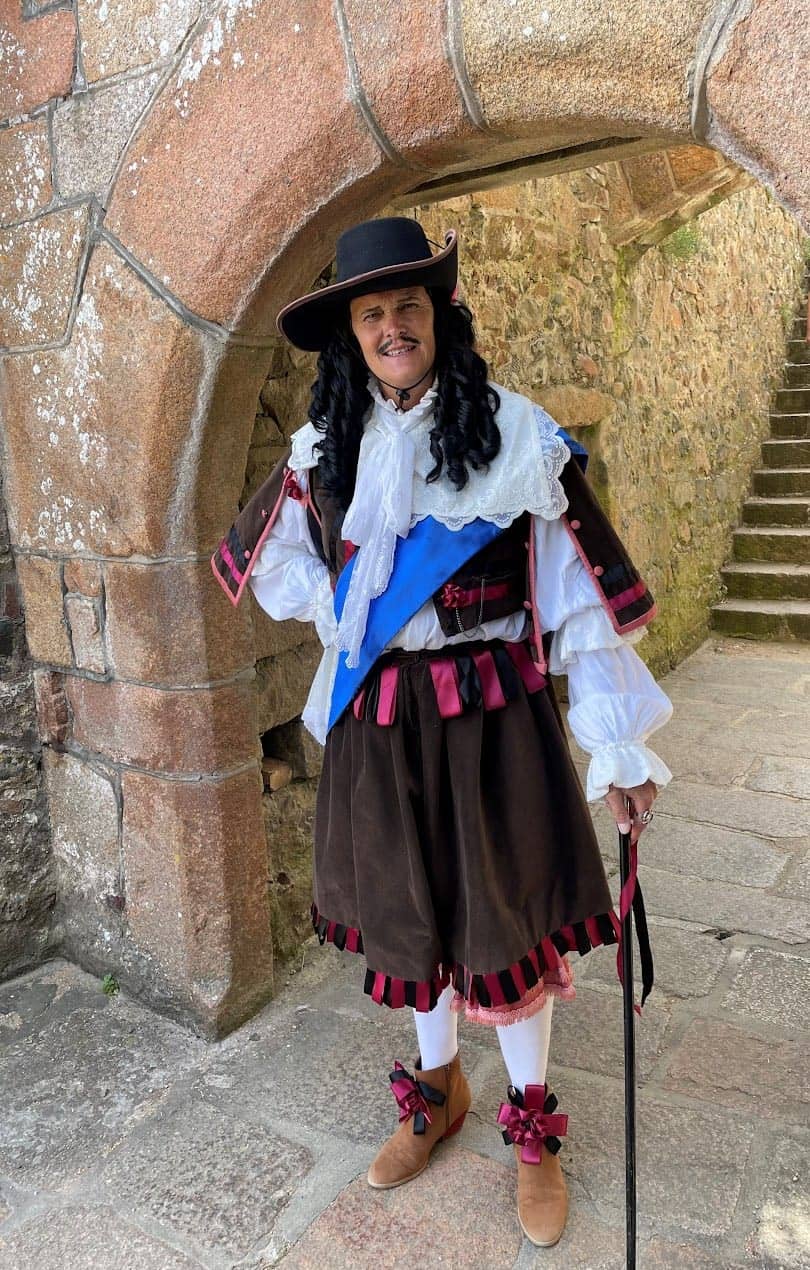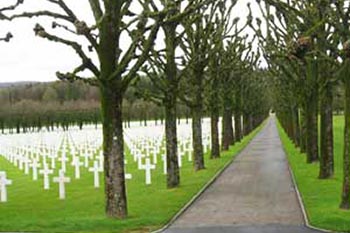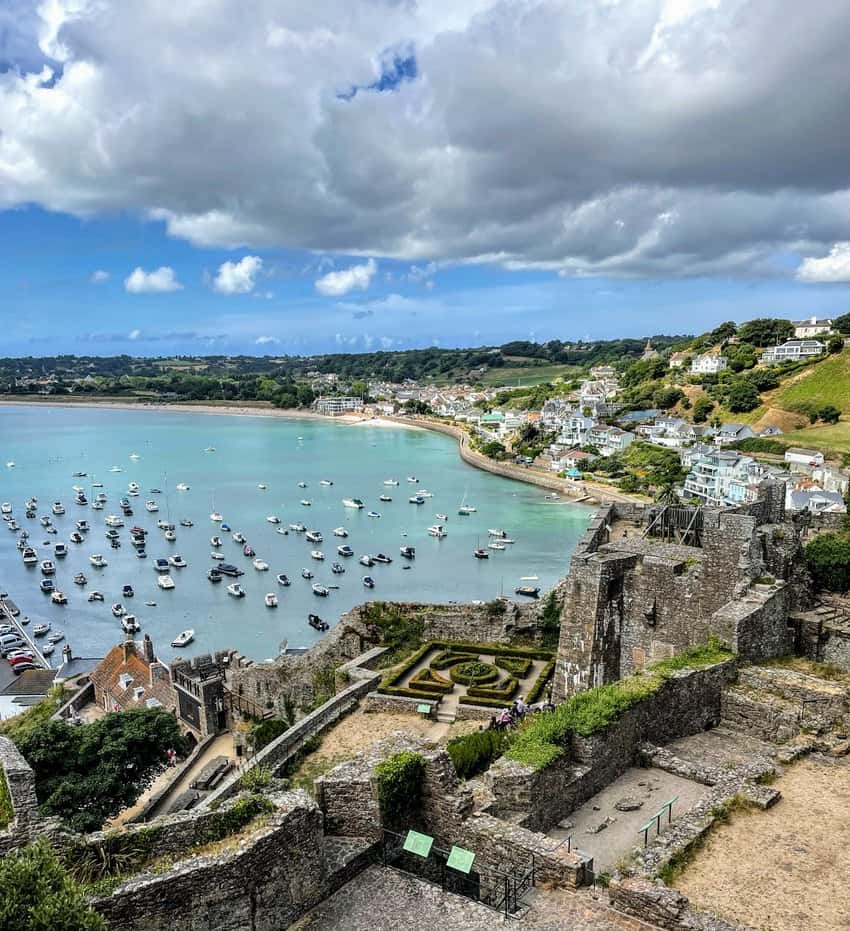
From Saint-Malo, France, to Jersey, U.K., by Ferry…and Why You Should Take It
By Rich Grant
GoNOMAD Senior Writer
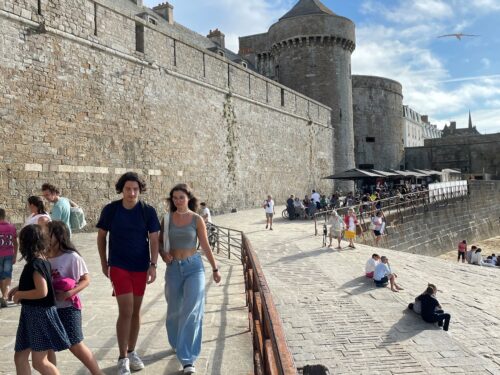
Saint Malo, France, and the Isle of Jersey, U.K., are separated by only 14 miles of water, a 90-minute ferry ride. Both have rugged shorelines dotted with cliffs and castles.
At times in history, centuries ago, they were part of the same nation. If you go back far enough, they were even part of the same land mass.
And both shared the same terrible fate of being brutally occupied by the Nazis during World War II.
So, it’s somewhat strange to discover how completely different they are today. Saint-Malo is deep France, a popular seaside resort with a long pirate history filled with fortresses, city walls, cobblestone streets and bakeries overflowing with fruit-filled pastries.
There’s an outdoor café on every corner dishing out picturesque meals like Moules-frites, omelets, and the specialty of Brittany, crepes, or more specifically, galettes, which is a version popular here made with buckwheat, eggs, milk and melted butter, transformed into a thin dark pancake and then filled with everything you can think of.
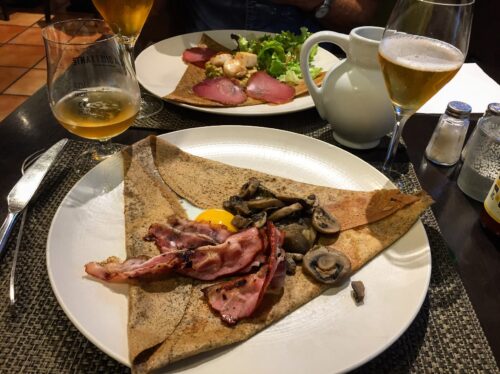
The traditional is ham, egg, and cheese, but you can get them stuffed with scallops, shrimp, mushrooms and more (but please limit yourself to four fillings, they say, or you will ruin the taste of the crepe itself).
Along the coast in Saint-Malo, there’s beach after beach with people braving the icy waters of the English Channel, lying under colorful umbrellas, splashing in the water or building sandcastles.
Jersey and the Channel Islands
Jersey, on the other hand, is like a mini -British theme park. With a population of just 105,500, it’s the largest of the five Channel Islands (Guernsey, Alderney, Sark and Herm being the other four). They are not part of Great Britain, but they are part of the U.K. Confused? Everyone is.
But Jersey is basically 46 square miles of castles flying the Union Jack, seaside resorts where no one enters the water (well, we did see one person – in a wet suit), and a slew of true English pubs where under a ceiling of dark wood beams, you order your meals and drinks at the bar and have a choice of several real, hand-pumped, cask conditioned local ales.

A pub meal here will be fried scampi on a white plate with boiled peas and carrots, but of course you can also get traditional fish and chips as well as well as steak and Guinness pie and bangers and mash.
But don’t try looking for a croissant. On a clear day you can see France, but you won’t see a baguet or a French pastry shop in Jersey.
The island is known world-wide for Jersey cows, which have been a pure breed that originated from here six centuries ago. Jersey cows deliver more milk with a higher buttermilk content on less feed than any other bovine.
Not to mention, their fawn-colored faces and sweet eyes make them loveable. Boomers will remember “Elsie the Cow,” a pure-bred Jersey.
In Saint-Malo, you can’t throw a spoon without hitting a gelato or ice cream stand offering a cornucopia of flavors, styles and colors. In Jersey, there is only one ice cream: a soft served vanilla. Ah, but it is made with Jersey milk. And the truly adventurous can order a chocolate flake to stick into the swirl.

So, viva la difference! It’s what makes a visit to both places just like walking between the England area and the French area at Epcot. Except this is real. In a matter of minutes, you experience two different cultures that for centuries have been so close and yet have gone in so completely different directions, separated by just a little bit of water.
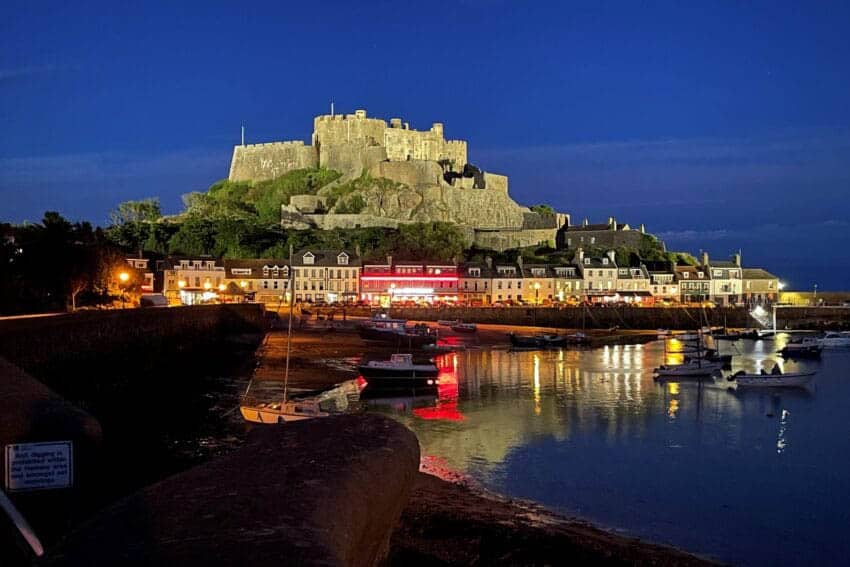
First, Some Background
Jersey has been part of the United Kingdom since 1204. The Union Jack flies from anywhere you can post a flagpole, people drive on the left, and there are double decker buses (though they are painted green). Much like London, almost every service person you meet in a pub, restaurant or shop speaks English with an accent and are from some other country.
But take a look at the cars driving by and you can tell that Jersey is also an island of very wealthy people. At least those driving cars. Every inch of the island is accessible by their public bus system, which is as efficient as Swiss Rail.

The free public bus timetable is 80 pages thick and with it you can easily figure out how to get anywhere. You certainly don’t need a car in Jersey and if you buy the daily bus pass (9 pounds, purchasable on any bus) you can hop on and off with ease.
Saint-Malo, on the other hand, is a major port town and the largest city in Brittany, France’s northwest cul-de-sac that reaches out into the Atlantic Ocean like a crooked thumb.
For most Americans, Brittany is just too far off the traditional loop trip that takes busloads of visitors from Paris to the castles of the Loire Valley, then up to the Normandy beaches.
The Wilds of Brittany
The wilds of Brittany are out of the way, and quite different from the rest of the country. Brittany has its own language, its own music, its own food and drink and its own laws. Much like Wales and Scotland are to the U.K., Brittany is independent with a strong Celtic background steeped in tradition and legends.

If you see a picture of a lighthouse about to be engulfed by a towering wave, that’s Brittany. The coast is rugged, rocky, and huge. One-third of France’s coastline is in Brittany. The villages are all made of stone, but the coldness is set off by brilliant marine-blue shutters and doors and hundreds of colorful flower boxes and gardens.
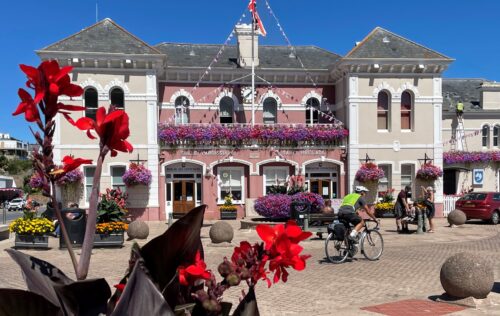
The bays are protected by fearsome castles and fortresses, the tides are among the largest in the world leaving boats and even towns dry-docked at low tide, and the people are tough and stoic, as is anyone who makes their living from the sea.
And yet, Brittany is spectacularly beautiful. It’s a rare calendar of France that is not filled with colorful pictures of doors, windows, flower baskets and gardens from Brittany, where the gulf stream provides a temperate climate that can support a wide assortment of plants and even palm trees.
As can the isle of Jersey just 14 miles away. So, viva la difference! Here’s what to see in a day or two in both locations with a pleasant 90-minute ferry ride in-between.
Saint-Malo’s Famous Pirates
Pirates! We usually think of English pirates, but the French produced just as many, and this was their home port. Most of them were “privateers,” given permission by French kings to attack and capture British ships and you’ll see more pirate souvenirs here than at Disney World.
The town is surrounded by high walls and walking the walls (about a mile circle) under a sky of squawking seagulls and sea air breezes is a chief attraction. The harbor attracts an array of visiting tall ships, and the narrow pedestrian streets inside the walls are crammed with cafes and shops.
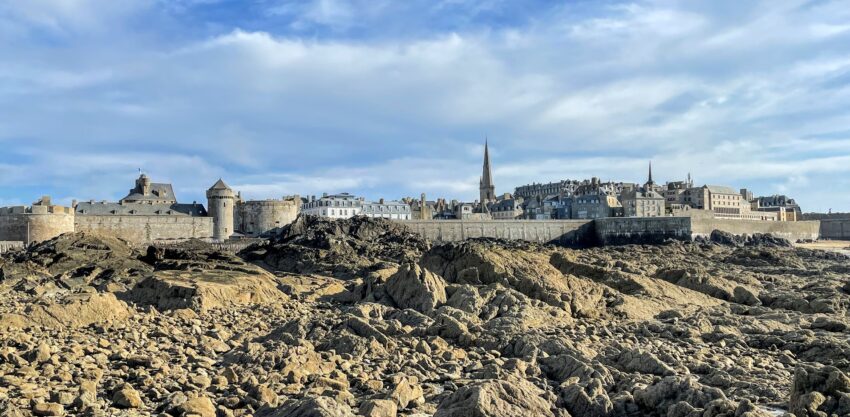
Just offshore are a series of fortresses that are only accessible at low tide. If the tide is right, do visit the National Fort, one of the most picturesque in France. If you see the French flag flying, it’s safe to walk to its walls, but keep a wary eye on the horizon. The tide can come in faster than a galloping horse and the sea has claimed many bodies of those who did not pay attention. The National Fort is also where many civilians were imprisoned by the Germans in World War II.
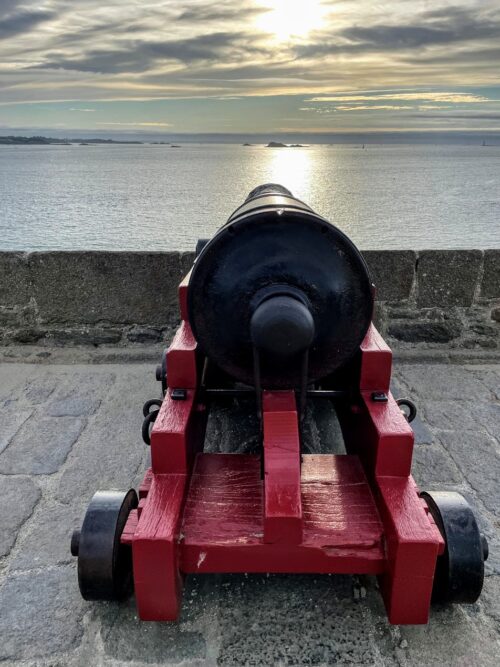
Ironically, much of what looks old around Saint-Malo is actually new. In 1944, D-Day took placed in Normandy, far to the east of Saint-Malo, and while the Allies captured the beaches and pushed on towards Paris, the Germans still held on to this western flank of France.
That simply wouldn’t do, and the Americans were forced to bomb Saint-Malo, hoping to wipe out the German fortifications in their rear.
Missing their Targets
As often happened with aerial bombardments, they missed the target and instead destroyed 80 percent of Saint-Malo, killing many civilians. Therefore, much of Saint-Malo is new, but was rebuilt by America after the war to look old.
You can walk along the harbor on a beautiful pedestrian path for two miles to the cute town of Alet, passing along the way the real German bunkers that survived the war and can still be seen, many pot-marked with shells.
Saint-Malo is the perfect base to tour three nearby world class attractions, all about an hour away. The Abbey at Mont-Saint-Michel rises from the sea like a fairy-tale castle and is one of the most famous places in France.
It is an UNESCO World Heritage site and its medieval streets, dating to the 8th century, are gorgeous, but also impossibly crowded. This incredible island fantasy, surrounded by water at high tide, walkable at low tide, is a must visit. It is as fantastic as Egypt’s pyramids. But after the crowds, you’ll be glad to drive an hour back to the manageable crowds in Saint-Malo.
Just to the south of Saint-Malo is Dinan, one of the prettiest medieval towns in Brittany with winding streets, riverside cafes, half-timbered buildings, and a castle looming over it all.
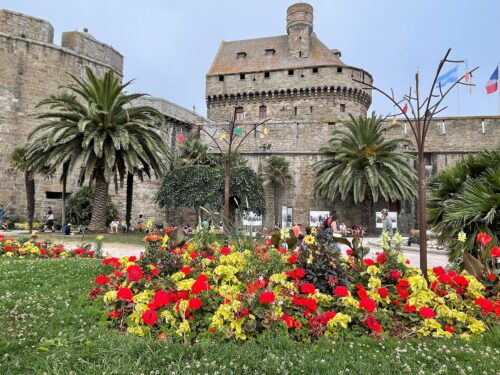
Baby boomers will enjoy seeing Fort la Latte, the fortress so associated in their minds with castles since it was featured in the 1958 movie, “The Vikings,” staring Kirk Douglas and Tony Curtis.
The Viking attack on the castle in the film is one of the most memorable and can be seen here. A giant battering ram similar to the one in the film is still at the fort, and with the rugged coastline, the double drawbridge, and the high tower in the center, it is truly one of the most romantic of all fortresses, with many trails leading to different viewpoints.
The Isle of Jersey
In 6000 BC, Jersey was actually part of the land mass of Normandy peninsula before it broke off to become an island.
In 1066, William the Conqueror made it part of Normandy again, by defeating the Saxons at the Battle of Hastings. But in 1204, the islanders broke away from France and pledged their allegiance to King John, and they have had a relationship to the English Crown ever since.
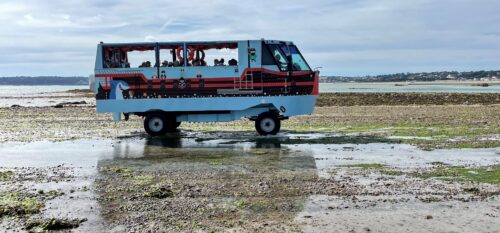
Not without trouble, of course. Castles, invasions, and occupations are a large part of the history of Jersey, and what makes it a fascinating place to visit today.
Ferries arrive in the city of St Helier, named after a hermit who lived here in 555 AD and was murdered by raiders. The town is wonderful, like an English market town with pedestrian streets, British goods, department stores and markets.
More enjoyable, and easily accessible by bus, are the seaside villages. Gorey, is a small half circle village of pubs and shops around a harbor of boats sitting beneath Mont Orgueil Castle, a 600 year old treasure of a fairy tale fortress.
Certainly, visit it by day when you can walk every inch of the walls, ramparts, and towers. But also come back at night on a 20-minute bus ride from St Helier to see it lit up around the picturesque harbor.

St. Aubin is the prettiest of the seaside villages with pubs and boats and overflowing flower baskets dripping from every lamppost.
It also has its own fort, a deserted place of ramparts that is free to visit at low tide, though if you haven’t had enough of forts, Elizabeth Castle in St. Hellier’s harbor is much better.
Again, surrounded by water at high tide, Elizabeth Castle (named by Sir Walter Raleigh in 1590 in honor of the first Queen Elizabeth) is always accessible by fun duck boats that take you across the water in high tide and let you walk back at low, and it is yet another romantic fortress by the sea.
Speaking of walks (which is a strong tradition on the Isle of Jersey) it’s an easy walk from St. Aubin to the Jersey War Tunnels, an underground tunnel complex built by Germans using slave labor in World War II.
Why did they do it? That is never really explained, though part of the tunnel complex was used as a hospital. Slave labor also built huge German fortifications around all the Channel Islands.
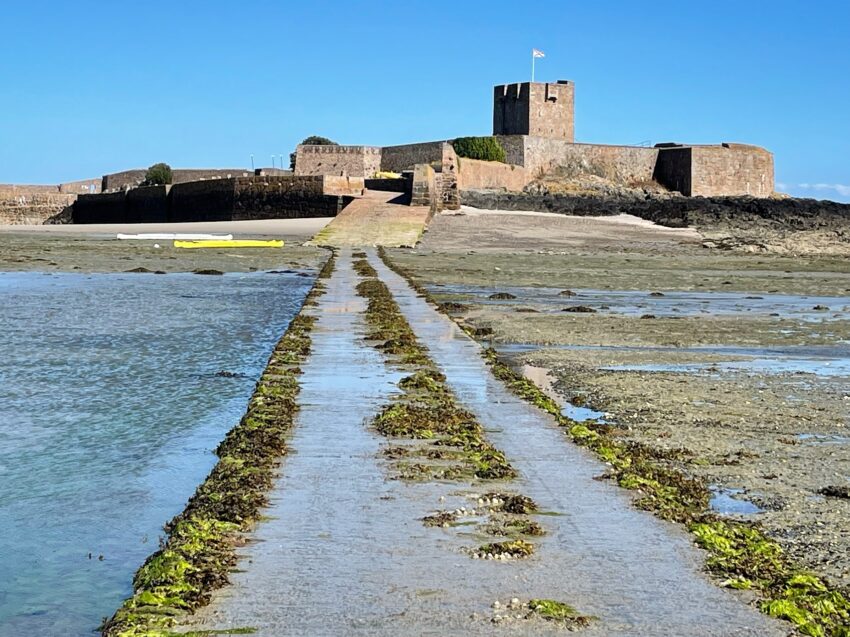
Right after Dunkirk, the Germans occupied the Channel Islands, and there was nothing the British could do to stop them. It was the only part of the British Empire to be occupied by Nazi Germany and it was occupied almost the entire war, from June 30, 1940, until Liberation Day, May 9, 1945.
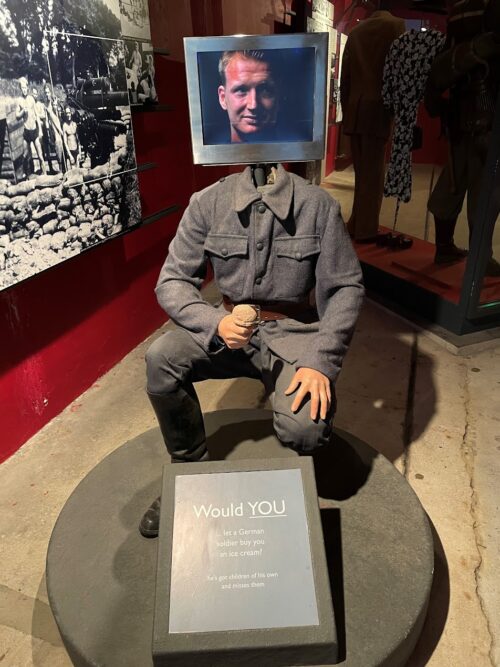
The museum is filled with stories of this occupation – heroes who resisted, traitors who informed on their neighbors, and “Jersey Baggers,” women who slept with German soldiers. One young woman refused a German officer and was sent to a concentration camp, where she died.
The saddest story is that after D-Day, the war moved in a different direction and neither the Germans nor the Allies could support the unimportant Channel Islands.
Isolated, the islanders and German occupiers were deprived of all supplies and help and nearly starved. Informed of this, Winston Churchill infamously said of the Channel Islands, “Let ’em starve. No fighting. They can rot at their leisure.”
Whether he was referring to the German occupiers, the Channel islanders, or both, has never been determined.
But you certainly won’t starve. Many B&B’s serve the full, traditional English breakfast and anyone who starts the day with bangers, bacon, blood sausage, tomatoes, mushrooms, and toast is good for the day.
Jersey Travel Tips
My brother and I were driving around Brittany, parked the car, stuffed a few essentials in a small backpack and took the ferry to Jersey for two nights.
With the efficient buses, you can pretty much stay anywhere in south Jersey, but the ferries operate early, so staying somewhere within a mile or so of the ferry dock would be best. Jersey prints their own bills, and a one-pound note makes a great souvenir, but they accept English pounds, but not Euros.
Find out more at Visit Jersey
- Oklahoma City and the Protest Movement - February 15, 2024
- California, We Still Love You - August 31, 2023
- Western Gunfighting Towns You Gotta See - March 25, 2023

